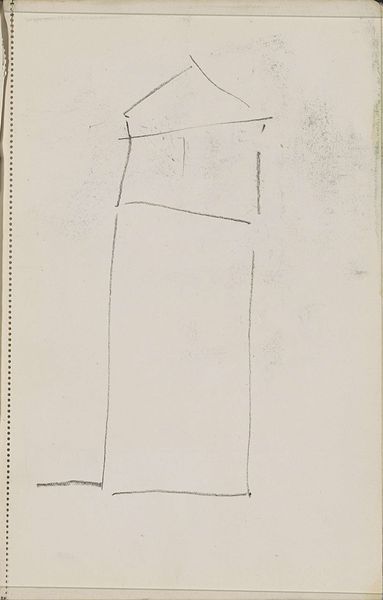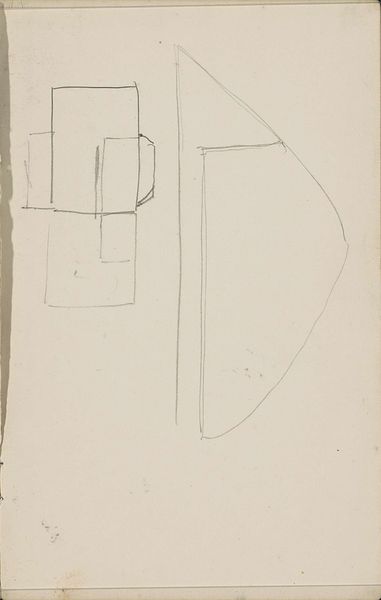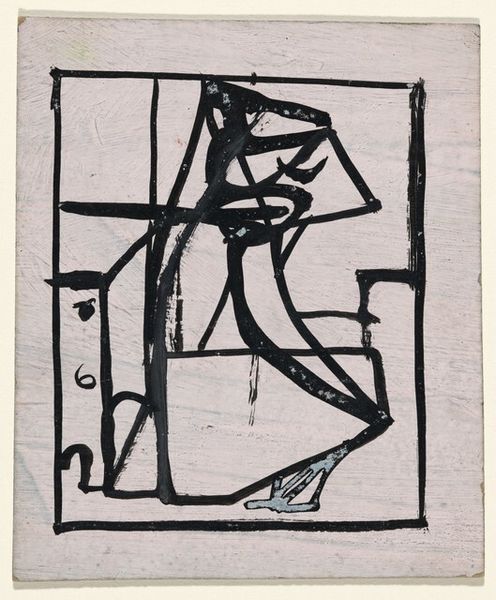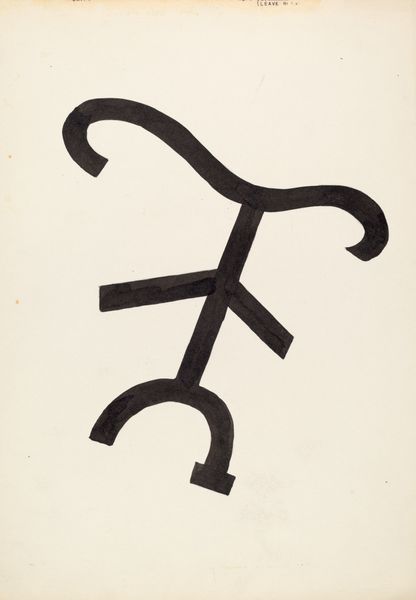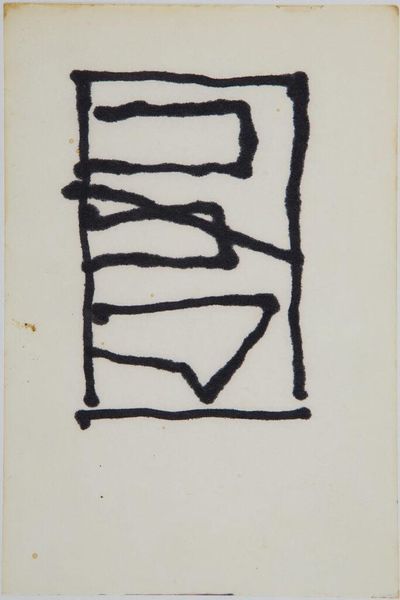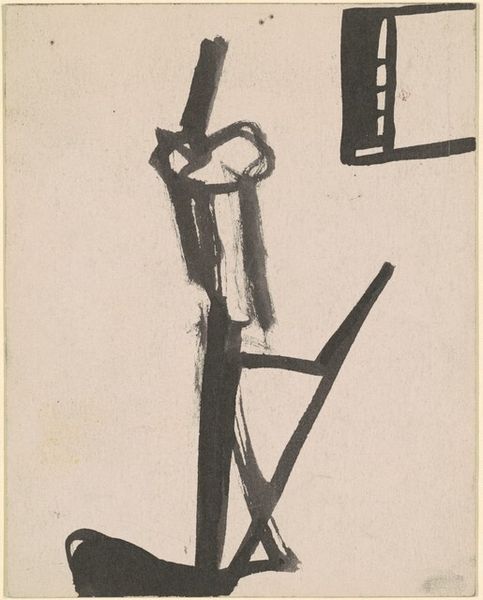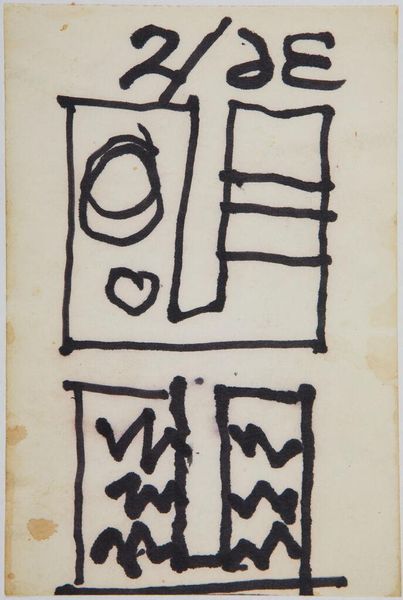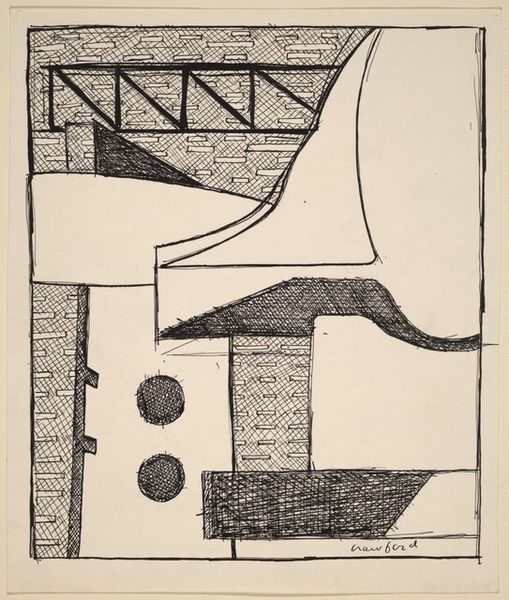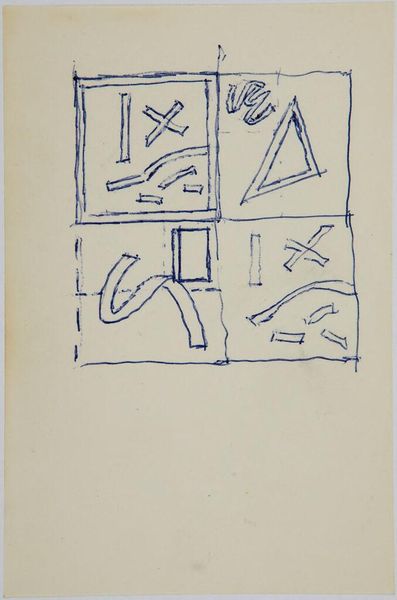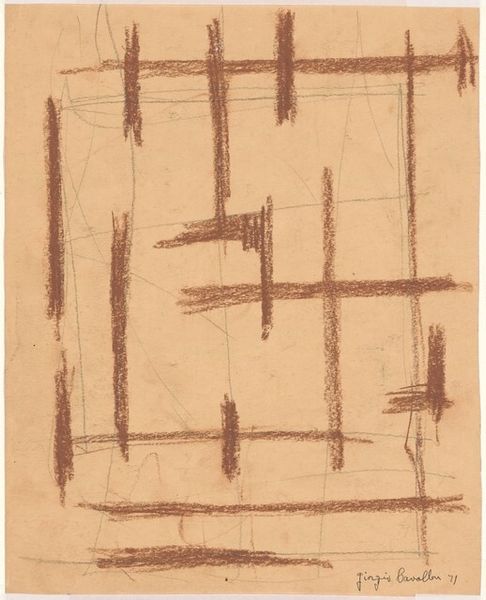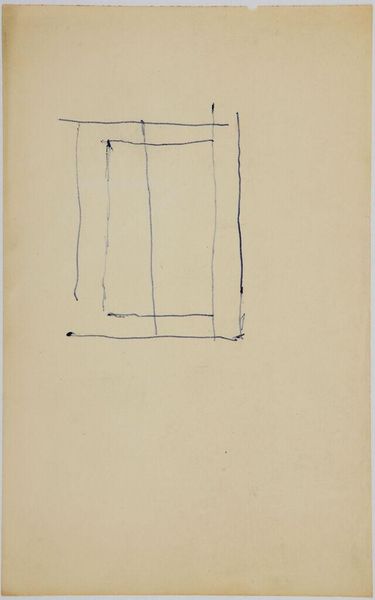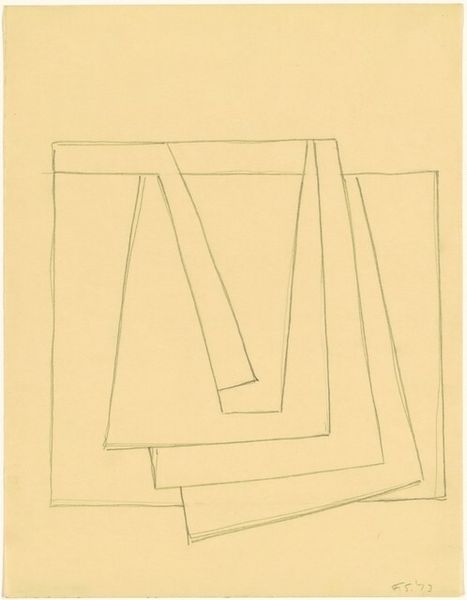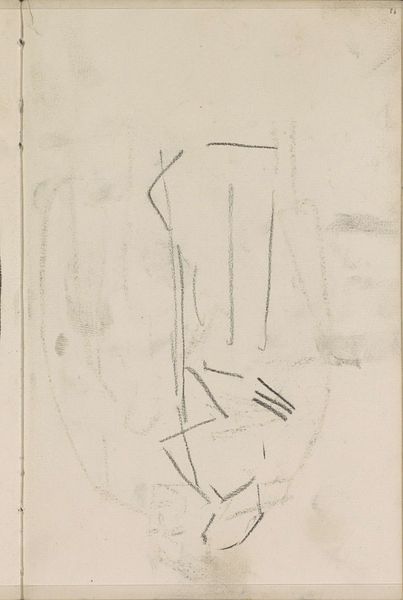
drawing, print, graphite
#
drawing
#
minimalism
# print
#
geometric
#
abstraction
#
line
#
graphite
#
modernism
Dimensions: stone: 355 x 275 mm sheet: 380 x 283 mm
Copyright: National Gallery of Art: CC0 1.0
Curator: So, here we have Ellsworth Kelly's "Untitled (Music Stand)" from 1949, a print executed in graphite. Editor: Okay. Immediately I see the spareness, right? Like someone took the bare bones of a music stand and just, boom, put it on the page. It's intriguing because it’s so reduced, almost schematic, and yet, it feels kind of monumental. Curator: The seeming simplicity is characteristic of the minimalist movement and modernism more broadly, particularly in the post-war period. Kelly, like many artists of his time, was grappling with new ways to represent the world after the atrocities of World War II. Stripping things down to their essential forms can be read as a reaction against grand narratives. What do you make of the abstraction? Editor: Well, abstraction is everything here, isn't it? It’s more of a feeling than a recognizable music stand. Like maybe this is what music *feels* like made visible: support and reaching and...a certain vulnerability in its starkness. It also brings to my mind some tribal signs or codes that I would not be able to translate, but definitely triggers some form of archetypes. Curator: Yes! It's fascinating how it evokes those archetypes. One could consider how such simplification challenges traditional art historical canons which valued representational accuracy, and how that valuing also encodes social and political power structures. It certainly invites a more participatory role from the viewer. The black and white contrast is really striking too. Editor: Absolutely. It's powerful. The sharp contrast and thick, raw lines give it a real graphic punch. Almost like a protest sign, a simple statement against the noise, wouldn’t you say? What appears rigid, however, also expresses the fragile human element of drawing, especially when rendered in pencil with all its imperfections and soft edges. Curator: Yes, that tension between rigidity and vulnerability is key. There's a deliberateness here. This is where line and form really meet. Understanding Kelly’s work through this lens reveals how an abstract geometric form carries socio-political undertones about the way power and meaning function within representation. Editor: Beautiful. So I initially saw bareness, but now I see a presence, a subtle yet strong statement on the essentials, the underlying structures. Like a manifesto drawn in charcoal. I am changed. Curator: Exactly. Art like this makes us reconsider our relationship to images and their place within cultural discourses.
Comments
No comments
Be the first to comment and join the conversation on the ultimate creative platform.
